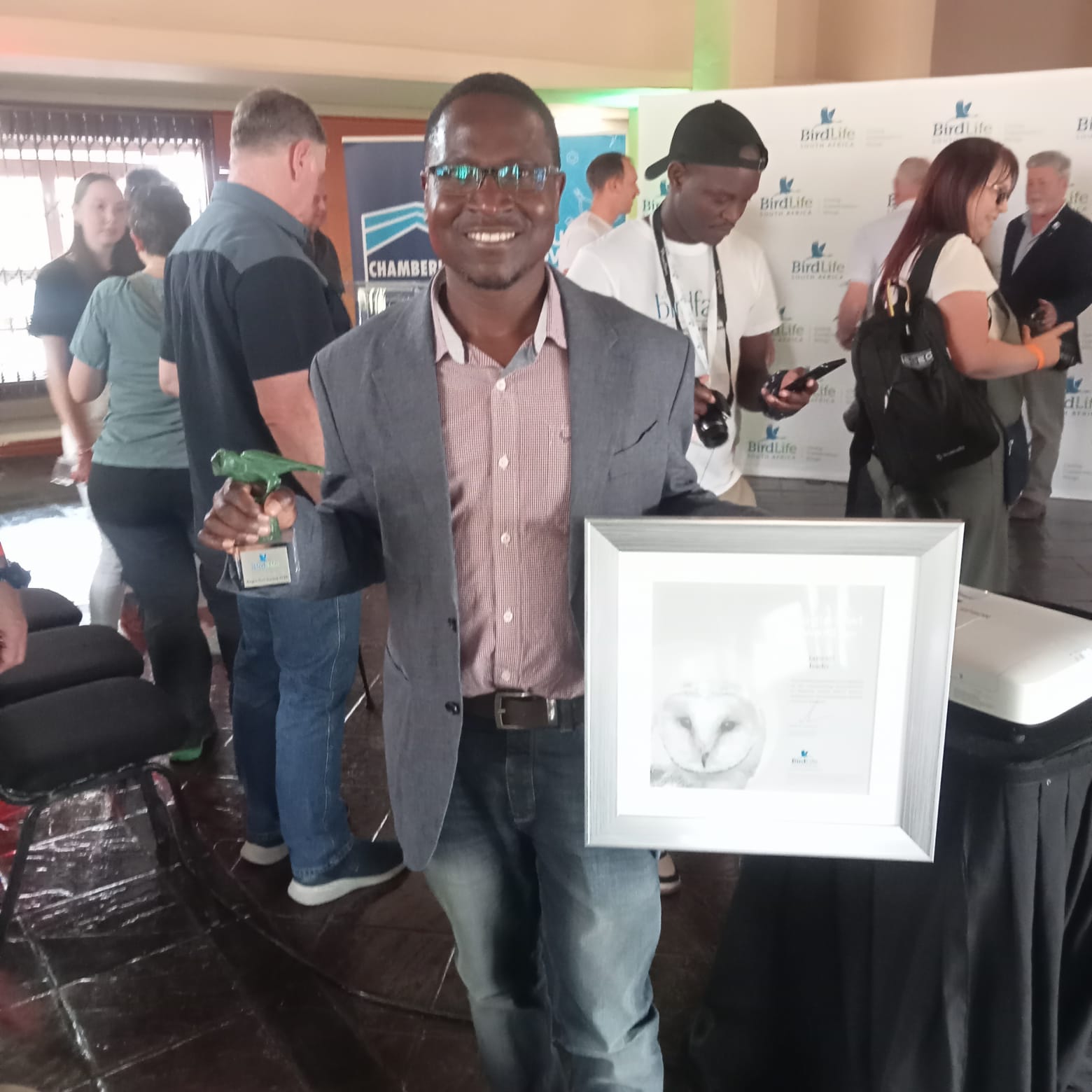 Newi Makhado proudly holds his Eagle-Owl Award statuette and framed certificate, photograph by John Cooper
Newi Makhado proudly holds his Eagle-Owl Award statuette and framed certificate, photograph by John Cooper
South Africa’s ACAP National Contact Point, Dr Azwianewi (Newi) Makhado of the Department of Forestry, Fisheries and the Environment, received a prestigious Eagle-Owl Award from BirdLife South Africa at the South African Bird Fair in the Pretoria National Botanical Garden
this last weekend. One of only two Eagle-Owl Awards made for 2025, Newi received the award from BirdLife South Africa’s President, Yvonne Pendleton.
Newi Makhado is a Member of the ACAP Advisory Committee representing South Africa, and of both the Population and Conservation Status Working Group and Seabird Bycatch Working Group that report to the Advisory Committee. Dr Makhado also serves on the Scientific and Technical Advisory Group and Non-target Species Advisory Panel of the Saving Marion Island’s Seabirds: The Mouse-Free Marion Project.
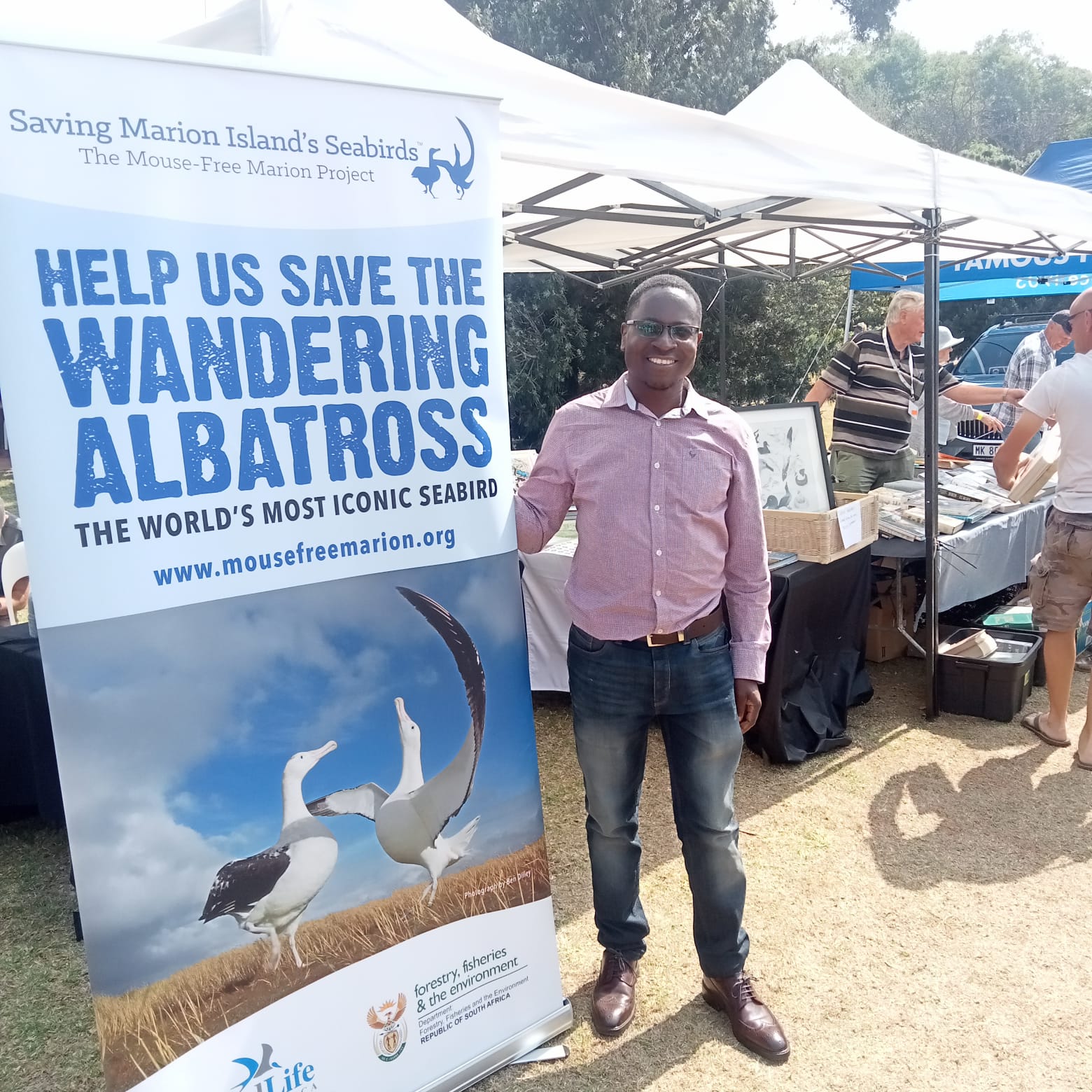
Newi Makhado visits the Mouse-Free Marion Project stand at the 2025 South African Bird Fair on 06 September, photograph by John Cooper
Newi’s award citation follows:
“Dr Azwianewi (Newi) Makhado deservedly receives an Eagle-Owl Award in recognition of his significant contributions to seabird conservation and his support of BirdLife South Africa's strategic objectives, particularly through the Seabird Conservation Programme and the 2025 Regional Red List assessment process.
Newi is a leading seabird ecologist and a dedicated conservation scientist with the Department of Forestry, Fisheries and the Environment, where he leads the Top Predator programme. In this role, he has made extensive contributions to the understanding and protection of South Africa’s marine top predators, notably seabirds such as penguins, albatrosses and petrels.
In 2024 and 2025, together with Rob Crawford, Newi co-authored 11 Red List assessments, applying his in-depth knowledge of long-term monitoring data, particularly for species breeding at the Prince Edward Islands. His technical input ensured that population trends and threats were accurately documented, and that conservation statuses were grounded in the best available evidence. He also provided guidance on broader seabird assessments, demonstrating his commitment to collaborative and rigorous science.
Beyond his formal duties, Newi has played a significant role in supporting BirdLife South Africa’s Seabird Conservation Programme. He has facilitated access to data, engaged meaningfully in scientific dialogue and represented South Africa in international policy arenas such as the Commission for the Conservation of Antarctic Marine Living Resources and the Agreement on the Conservation of Albatrosses and Petrels. His ability to bridge science and policy has advanced regional and global conservation efforts for seabirds.
His passion for seabirds is captured in Birds on the Brink, where he reflects on decades of grueling yet purposeful fieldwork at Marion Island and on the Antarctic Peninsula. His research has illuminated the complex interactions between fur seals and seabirds, chronicled the alarming declines in Macaroni and Rockhopper penguins, and highlighted the multiple pressures faced by marine predators in changing ecosystems.
Since 2023, Newi has voluntarily contributed his time and expertise as a member of the BirdLife South Africa Conservation Advisory Committee, further supporting the organisation’s conservation efforts.
Newi’s contributions extend far beyond field surveys: he is a champion of conservation, a mentor to young scientists, and a powerful advocate in international forums. His support of BirdLife South Africa has been instrumental to our work and mission. For these reasons, he is a worthy recipient of an Eagle-Owl Award.”
ACAP extends its congratulations to Newi Makhado and looks forward to continuing to work with him both intersessionally and at its meetings.
With thanks to Clare Neall, BirdLife South Africa.
John Cooper, Emeritus Information Officer, Agreement on the Conservation of Albatrosses and Petrels, 08 September 2025
 Arctic Fulmar
Arctic Fulmar
 English
English  Français
Français  Español
Español 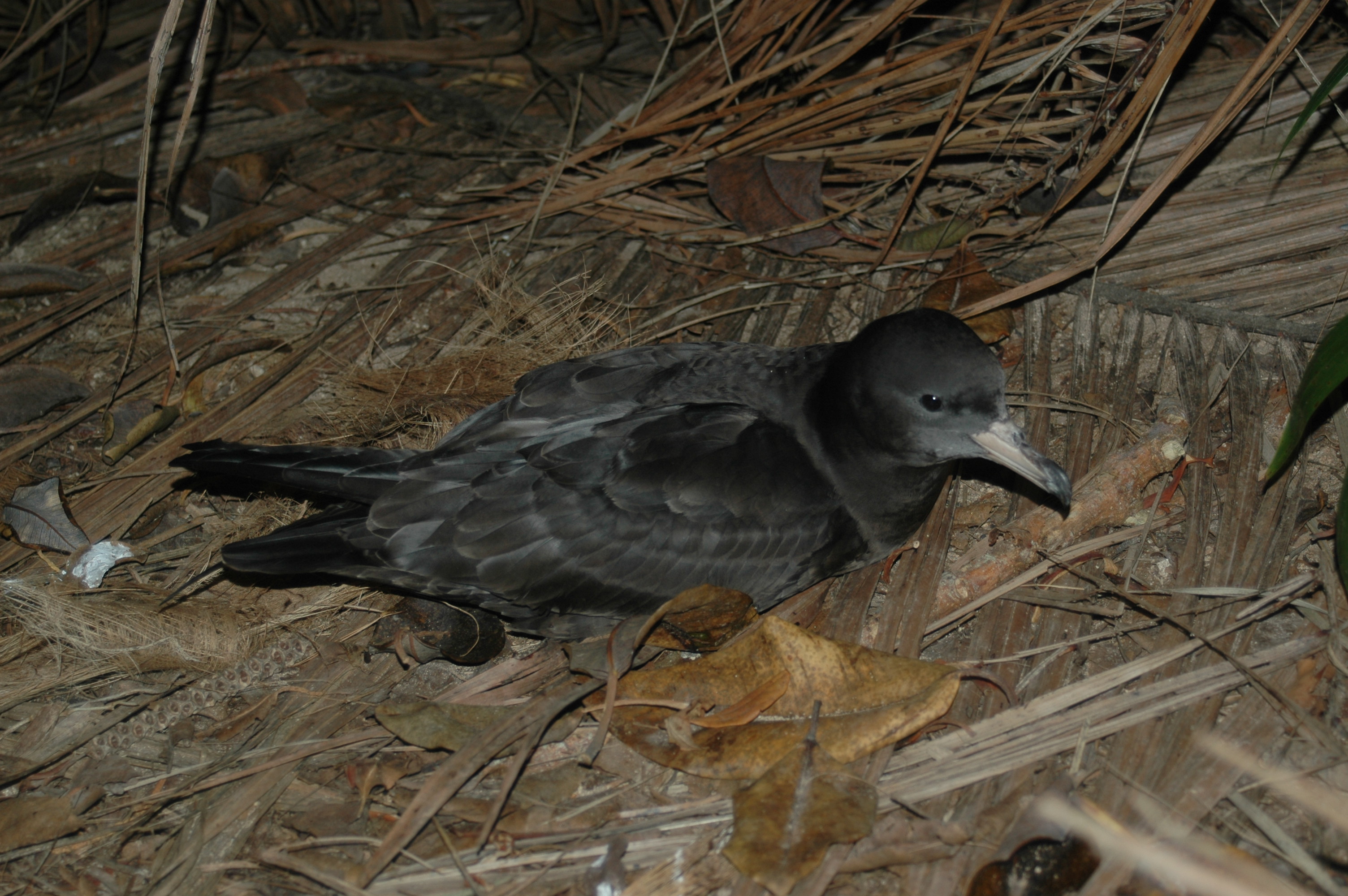 A Flesh-footed Shearwater on Lord Howe Island, photograph by Tim Reid
A Flesh-footed Shearwater on Lord Howe Island, photograph by Tim Reid Newi Makhado proudly holds his Eagle-Owl Award statuette and framed certificate, photograph by John Cooper
Newi Makhado proudly holds his Eagle-Owl Award statuette and framed certificate, photograph by John Cooper

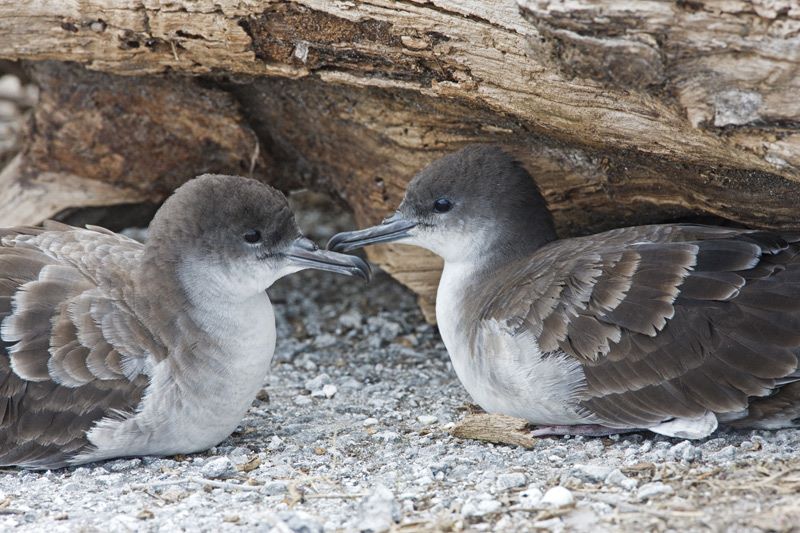
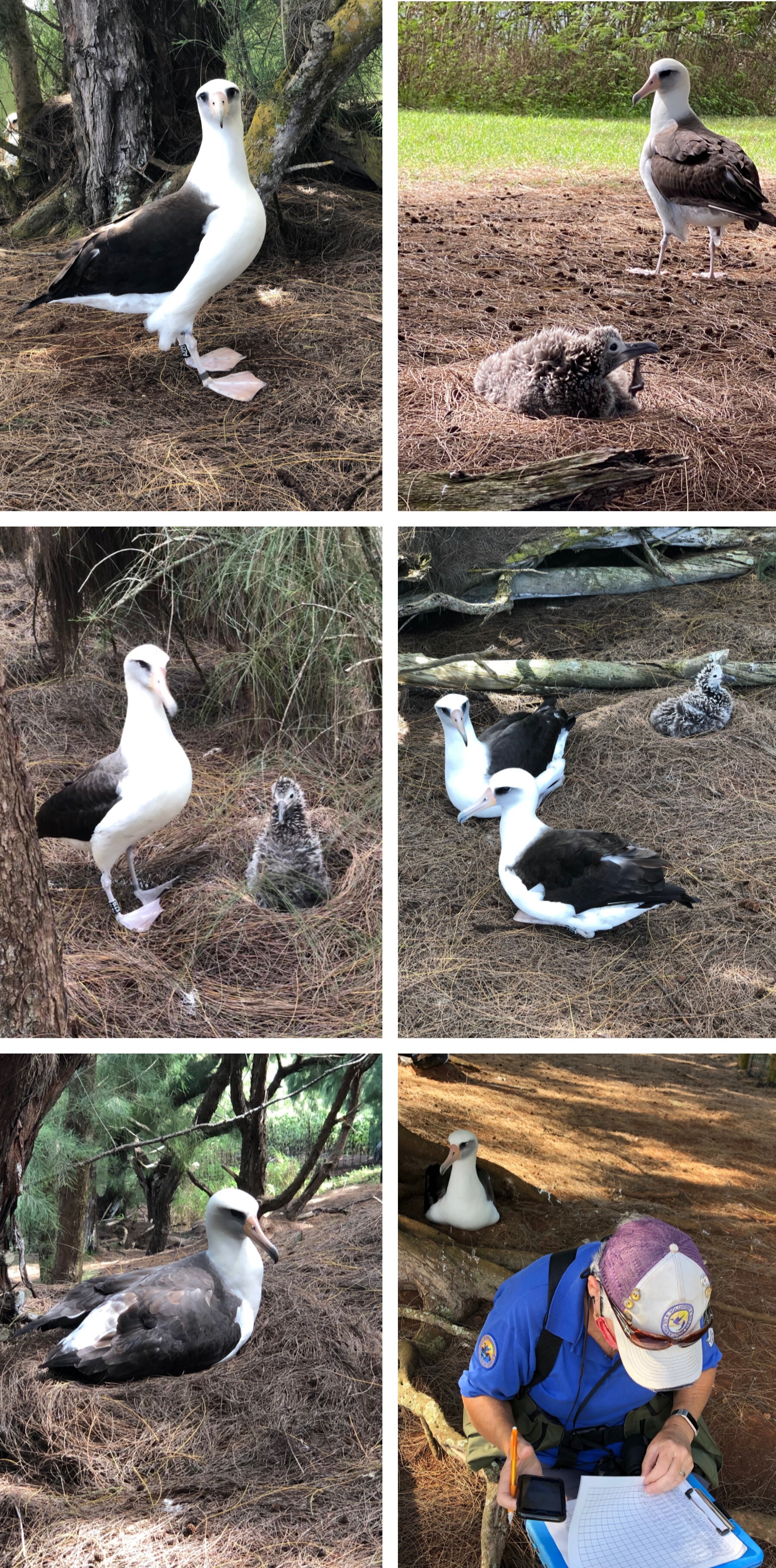 Breeding Laysan Albatrosses at the Kilauea Point National Wildlife Reserve and USFWS volunteer Louise Barnfield completing a weekly survey. Photographs from Louise Barnfield
Breeding Laysan Albatrosses at the Kilauea Point National Wildlife Reserve and USFWS volunteer Louise Barnfield completing a weekly survey. Photographs from Louise Barnfield